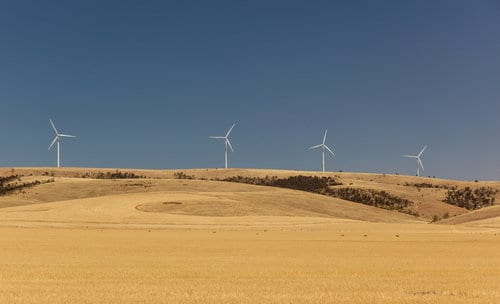
It’s no accident that the South Australian economy has been reaping the benefits of massive investment in renewable power such as solar and wind, nor is there anything accidental about the South Australian Government’s long-term clean energy vision – to lead the country in renewable energy.
It’s no accident either that massive renewable energy investments have already flowed to the state over others. South Australia’s location and geography make it ideal for wind and solar power.
So it’s strange that opponents have tried to portray the shift towards clean energy as some great accident or experiment, ignoring the fact that the policies to make this happen have been in place for more than a decade.
Former Premier Mike Rann was early to recognise the potential of renewable energy investment to transform the economic landscape of South Australia. Premier Jay Weatherill has taken this a step further and, $6.6 billion of investment later, renewable energy is one of a host of changes that have helped to change South Australia’s reputation as a ‘rust bucket’ state towards one that has its sights firmly over the horizon.
With nearly 30 per cent of the state’s homes hosting a solar power system, along with many businesses, South Australians have also realised a massive opportunity to seize back control of their power bills. This too is no accident. A well-documented mix of high power prices and clear long-term polices were the factors driving this uptake and the resulting economic and jobs growth.
There is a large body of evidence demonstrating that transitioning our energy system towards more renewable energy actually reduces electricity costs – the most prominent being the analysis conducted for the Federal Government’s own review of the Renewable Energy Target.
Opponents on the one hand claim renewable energy is too expensive, and then they also claim it is too cheap, making it harder to turn a profit. They can’t have it both ways.
Analysis of the Australian Energy Market Operator’s electricity price data shows a clear pattern – when lots of wind power is generated, it pushes down prices. Under normal market conditions, power generators sell electricity to recover operating costs such as fuel. Renewable energy uses fuel that is free, so when the wind is blowing power prices go down, not up.
The proposed closure of Northern and Playford coal power stations – South Australia’s most polluting forms of power – are a symptom of this price suppression effect. The Playford power plant is half a century old and Northern has racked up three decades of service. Their retirement is no accident either. They face high operating costs and are no longer profitable.
Despite renewable energy placing downward pressure on wholesale prices, the South Australian electricity market has always been high-cost relative to other states. A combination of limited connectivity with other states, a relatively small number of customers spread over a large area and a lot of gas power use combined to make SA power prices some of the highest in the country, long before the first wind turbine was built.
The only surprise here is the challenge for large energy users looking for long-term contracts for their electricity supply. As gas prices rise across the country, contract prices for future years have been driven upwards. Despite a lot of enthusiastic finger-pointing and the occasional red herring, there doesn’t seem to be a clear connection with renewable energy.
With more than 40 per cent of the state’s electricity produced by the wind and the sun, South Australia has been a fantastic success story for renewable energy. Given the grim outlook for gas prices it’s time to pick up the pace of deployment. And with some strategic planning and collaboration between industry, network operators, government and regulators, the future looks even brighter.
Tom Butler is the network specialist at the Clean Energy Council.








